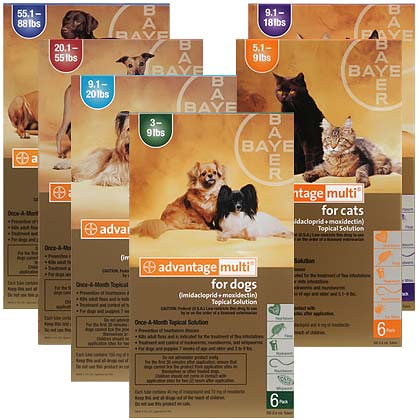You can’t keep your pet? Really?
Our society needs a huge “Wake-up” call. I am going to share a little insight with you all…a “view from the inside” – if you will.
First off, any of you whom have surrendered a pet to a shelter or humane society should be made to work in the “back” of an animal shelter – for just ONE DAY.
Maybe if you saw the life drain from those sad, lost, confused eyes, you’d stop flagging the ads on here and help these animals find homes. That puppy you just dropped off will most-likely end up in my shelter when it’s no longer a cute little puppy anymore. Just so you know, there’s a 90% chance that your dog will never walk out back out, once entered in to the shelter system…Purebred or not! About 25% of all of the dogs that are “owner surrenders” or “strays” that come into a shelter are purebred dogs.
The most common excuses: “We’re moving and can’t take our dog (or cat).” Really? Where are you moving to that doesn’t allow pets?
Or they say “The dog got bigger than we thought it would”. How big did you think a German Shepherd would get?
“We don’t have time for her”. Really? I work a 10-12 hour day and still have time for my 6 dogs!
“She’s tearing up our yard”. How about making her a part of your family?
“We just don’t want to have to stress about finding a place for her & we know she’ll get adopted, she’s a good dog”. Odds are, your pet won’t get adopted & how stressful do you think it is for your pet?
Did you know…
Your pet has 72 hours to find a new family from the moment you drop it off? Sometimes a little longer if the shelter isn’t full
and your dog/cat manages to stay completely healthy.
If it sniffles, it is euthanized.
Your pet will be confined to a small run/kennel in a room
with other barking & crying animals.
It will have to relieve itself where it eats and sleeps.
It will be depressed and will cry constantly for you.
If your pet is lucky, there will be enough volunteers in that day
to take him/her for a walk.
If not, your pet won’t get any attention besides having a bowl of food slid under the kennel door and the waste sprayed out of it’s pen with a high-powered hose.
If your dog is big, black or any of the “Bully” breeds (pit bull, rottie, mastiff, etc) it was pretty much dead when you walked it through the front door.
If your cat is scared and doesn’t act friendly enough, or if it catches a cold (which most of them ‘do’), it will be put to sleep.
Those dogs & cats just don’t get adopted. In most cases, it doesn’t matter how ‘sweet’ or ‘well behaved’ they are. If your pet doesn’t get adopted within it’s 72 hours and the shelter is full, it will be destroyed. If the shelter isn’t full and your pet is good enough,
and of a desirable enough breed it may get a stay of execution,
but not for long.
Most dogs get very kennel protective after about a week and are
destroyed for showing aggression. Even the sweetest dogs will turn in this environment.
If your pet makes it over all of those hurdles chances are it will get kennel cough or an upper respiratory infection and will be destroyed because the shelter gets paid a fee to euthanize each animal and making money is better than spending money to take this animal to the vet.
Here’s a little euthanasia 101 for those of you that have never witnessed a perfectly healthy, scared animal being “put-down”.
First, your pet will be taken from its kennel on a leash. They always look like they think they are going for a walk…happy, wagging their tails…until they get to “The Room”, every one of them freaks out and puts on the brakes when they get to the door.
It must smell like death or they can feel the sad souls that are left in there. It’s strange, but it happens with every one of them.
Your dog or cat will be restrained, held down by 1 or 2 shelter workers, depending on the size and how freaked out they are.
Then a shelter worker who we call a “euthanasia tech (not a vet)”
finds a vein in the front leg and injects a lethal dose of the “pink stuff”.
Hopefully your pet doesn’t panic from being restrained and jerks.
I’ve seen the needles tear out of a leg and been covered with the resulting blood…the yelps and screams are deafening.
They all don’t just “go to sleep”, sometimes they spasm for a while,
gasp for air and defecate on themselves.
You see, shelters are trying to make money to pay employee pay checks and then, there’s the board of directors…who need to be paid too!
Consequently, corners are cut, & we don’t spend our funds to
tranquilize the animal before injecting them with the lethal drug,
we just put the burning lethal drug in their vein and let them suffer until dead.
If it were not a business for profit, we’d do it humanely and hire a
licensed vet do this procedure. That way, the animal would be sedated or tranquilized and THEN euthanized.
But to do this procedure correctly would only cost more money…
so we don’t necessarily do what is right for the animal, we do what’s expedient so we can continue to make a buck!
Shelters do not have to have a vet perform their euthanasia procedures. Oftentimes, they are untrained personnel administering lethal injections. So… that employee may take 50 pokes with a needle and 3 hours to get inside the vein.
In the end, your pet’s corpse will be stacked like firewood in a large freezer, usually in the back of the building with all of the other animals that were killed. There they will sit until being picked up like garbage.
What happens next? Cremated? Taken to the dump? Rendered into pet food? Or used for schools to dissect and experiment on?
You’ll never know and it probably won’t even cross your mind. After all, it was just an animal and you can always buy another one, right?!
I hope that those of you who still have a beating heart and have read this are bawling your eyes out and can’t get the pictures out of your head. I deal with this everyday. I hate my job, I hate that it exists & I hate that it will always be there unless you people make changes and start educating yourselves, your children, the public.
Do the research, do your homework, and know exactly what you are getting into before getting a pet. These shelters and humane societies exist because people just do not care about animals anymore. And PLEASE stop breeding!









